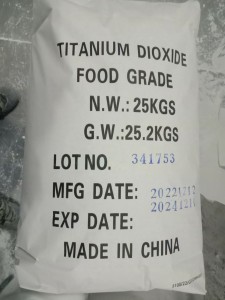Is Titanium Dioxide in Food Harmful?
The safety of titanium dioxide (TiO2) in food has been a topic of debate and scrutiny in recent years. Titanium dioxide is used as a food additive primarily for its white color, opacity, and ability to enhance the appearance of certain food products. It is labeled as E171 in the European Union and is permitted for use in food and beverages in many countries around the world.

While titanium dioxide is considered safe for consumption by regulatory authorities such as the U.S. Food and Drug Administration (FDA) and the European Food Safety Authority (EFSA) when used within specified limits, concerns have been raised regarding its potential health effects, particularly in nanoparticle form.
Here are some key points to consider:
- Particle Size: Titanium dioxide can exist in nanoparticle form, which refers to particles with dimensions on the nanometer scale (1-100 nanometers). Nanoparticles may exhibit different properties compared to larger particles, including increased surface area and reactivity. Some studies suggest that nanoscale titanium dioxide particles could potentially pose health risks, such as oxidative stress and inflammation, particularly when ingested in large quantities.
- Toxicity Studies: Research on the safety of titanium dioxide nanoparticles in food is ongoing, with conflicting findings from various studies. While some studies have raised concerns about potential adverse effects on intestinal cells and systemic health, others have found no significant toxicity under realistic exposure conditions. More research is needed to fully understand the long-term health implications of consuming foods containing titanium dioxide nanoparticles.
- Regulatory Oversight: Regulatory agencies, such as the FDA in the United States and the EFSA in the European Union, have evaluated the safety of titanium dioxide as a food additive based on available scientific evidence. Current regulations specify acceptable daily intake limits for titanium dioxide as a food additive, aiming to ensure its safety for consumers. However, regulatory agencies continue to monitor emerging research and may revise safety assessments accordingly.
- Risk Assessment: The safety of titanium dioxide in food depends on factors such as the particle size, exposure level, and individual susceptibility. While most people are unlikely to experience adverse effects from consuming foods containing titanium dioxide within regulatory limits, individuals with specific sensitivities or underlying health conditions may choose to avoid foods with added titanium dioxide as a precautionary measure.
In summary, titanium dioxide is permitted as a food additive in many countries and is generally considered safe for consumption within regulatory limits. However, concerns persist regarding the potential health effects of titanium dioxide nanoparticles, particularly when consumed in large quantities over extended periods. Continued research, transparent labeling, and regulatory oversight are essential for ensuring the safety of titanium dioxide in food and addressing consumer concerns.
Post time: Mar-02-2024
